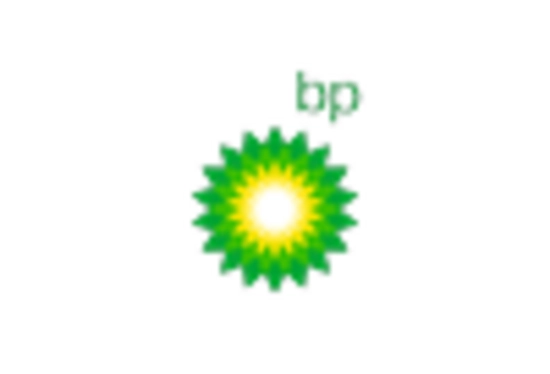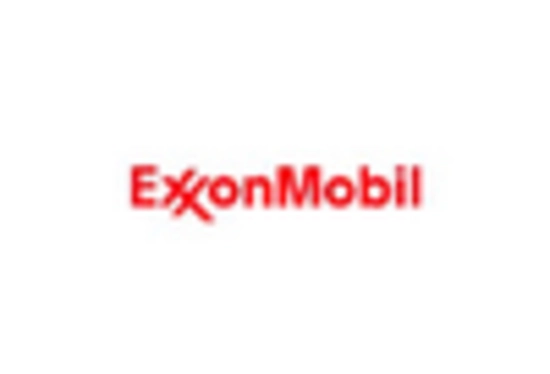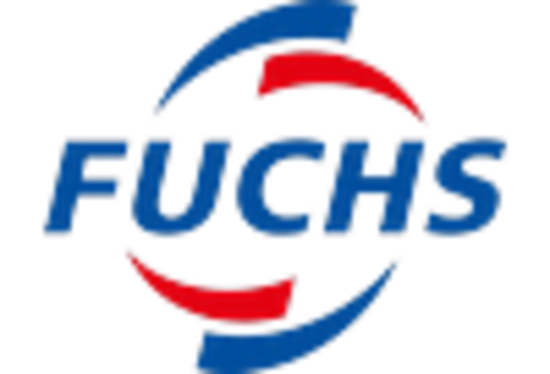Increasing Vehicle Production
The Automotive Gear Oil Market is experiencing growth due to the rising production of vehicles worldwide. As manufacturers ramp up production to meet consumer demand, the need for high-quality gear oils becomes paramount. In 2025, the automotive sector is projected to produce over 90 million vehicles, which directly correlates with the demand for automotive gear oils. This increase in vehicle production not only drives the need for lubricants but also encourages innovation in gear oil formulations. Manufacturers are focusing on developing oils that enhance performance and longevity, thereby catering to the evolving needs of modern vehicles. Consequently, the automotive gear oil market is likely to witness a surge in demand, as more vehicles on the road necessitate effective lubrication solutions.
Regulatory Standards and Compliance
Regulatory standards are increasingly influencing the Automotive Gear Oil Market. Governments around the world are implementing stringent regulations regarding emissions and environmental impact, which in turn affects lubricant formulations. Manufacturers are compelled to develop gear oils that comply with these regulations, leading to the creation of eco-friendly and low-emission products. As of 2025, it is anticipated that the demand for environmentally compliant gear oils will increase, driven by both regulatory pressures and consumer preferences for sustainable products. This shift not only enhances the market for automotive gear oils but also encourages innovation in developing products that meet these evolving standards, thereby positioning manufacturers favorably in a competitive landscape.
Growth of Electric and Hybrid Vehicles
The rise of electric and hybrid vehicles is reshaping the Automotive Gear Oil Market. As these vehicles become more prevalent, there is a growing need for specialized lubricants that cater to their unique requirements. Electric and hybrid vehicles often utilize different types of gear systems, necessitating the development of tailored gear oils that ensure optimal performance and efficiency. By 2025, it is projected that electric vehicle sales will account for a significant portion of the automotive market, further driving the demand for innovative gear oil solutions. This trend presents both challenges and opportunities for manufacturers, as they must adapt to the changing landscape while also capitalizing on the growing market for specialized lubricants.
Rising Awareness of Vehicle Maintenance
The Automotive Gear Oil Market is benefiting from an increasing awareness of vehicle maintenance among consumers. As vehicle owners become more informed about the importance of regular maintenance, the demand for high-quality gear oils is likely to rise. This trend is particularly evident in regions where vehicle ownership is on the rise, leading to a greater emphasis on maintaining vehicle performance and longevity. In 2025, it is estimated that the automotive maintenance market will reach a valuation of over 300 billion, with gear oils being a critical component of this sector. This growing awareness is prompting consumers to invest in premium gear oils, thereby driving market growth and encouraging manufacturers to innovate and improve their product offerings.
Technological Advancements in Lubricants
Technological advancements play a crucial role in shaping the Automotive Gear Oil Market. Innovations in lubricant formulations, such as the development of synthetic and semi-synthetic oils, are enhancing the performance of gear oils. These advancements are not merely incremental; they represent a paradigm shift in how gear oils are perceived and utilized. For instance, the introduction of advanced additives has improved the thermal stability and wear protection of gear oils, making them more efficient. As of 2025, the market for synthetic gear oils is expected to grow significantly, driven by their superior performance characteristics. This trend indicates a shift towards more sophisticated lubrication solutions, which are essential for modern automotive applications.

















Leave a Comment